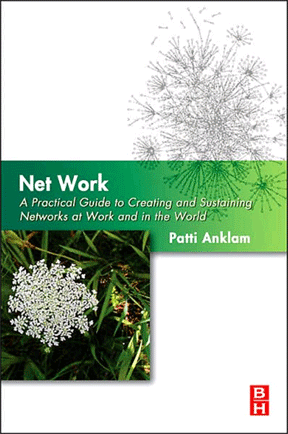Not long ago I noticed a query in the SIKM Leaders Yahoo Group about knowledge audits and knowledge mapping. The query began with the phrase “I am new to KM and have the daunting opportunity of developing a KM program in an organization full of knowledge hoarders and folks resistant to change. ” If ever there was an answer to the question, “Is KM Dead?” (another conversation in that illustrious forum), then this is it. As long as there are people out there charged with trying to get control of knowledge stocks and flows in an organization, there will be a need for KM. However you define it.
Personally, I began my career in KM and have never let it go. Recently I have had a focus on doing social network analysis in nonprofits, but that is because that is the work that came to me. Over the past year and a half, some KM projects have come to me and I get really happy about that. Why? The SNA projects are interesting but don’t satisfy my need to get my arms around big, juicy, complex problems — people and work habits, processes, technology and the realm of digital transformation. So I thought it might be time to raise my hand and say, “Remember me? I’m still here and still doing KM if you know an organization who might need some help making sense of what they are doing with what they know.”
To celebrate this, I’ve put a version of my “KM 101” up on SlideShare. It is the basis for the workshop that I conduct when I am in the middle of a KM assessment. I really believe that the most critical part of the assessment is engaging the staff of the organization from the beginning. So I do a survey, I do some in-depth interviews, I inventory all the current knowledge sharing receptacles and then in the workshop I talk about KM, key concepts, how to get started, and I feed back to the organization (with their management present) what I learned from the surveys and interviews.
Here are some of the points I made, privately, to the SIKM inquirer:
- If the organization has had a knowledge management program running, then the audit needs to look at all the existing tools, document repositories, etc. and determine which ones are being used the most, what problems exist, and so on.
- I typically develop a list of people to interview, ensuring that the list includes all the necessary departments or groups and people at a range of job levels. I prepare a list of questions, capture the responses on a laptop and then work with the data.
- If the organization doesn’t have a knowledge management program, then the audit becomes an educational tool. During the interview process I try to include questions about “what would it look like if we were managing knowledge well?” The more people interviewed (especially if you include influential “change agents”) the more buzz you create for the program (or for what you are going to change).
- The audit process should also uncover a lot of “good practices” — work habits, repositories, tools — developed in one part of the organization that other parts might benefit from learning about. These nuggets can be the basis of “lunch & learn” kinds of things or starting points for thinking about things you want to spread organization-wide.
- Surveys can, in addition to getting information on what tools are used, can also take the “pulse” of the organization — asking people about how easy it is to find information, or to find people when they need help, about their perceptions of managers’ attitudes toward taking the time to share, etc.
- I also sometimes do an organizational network analysis as part of the audit to get a sense of how knowledge is flowing across the organization. This can get to some really good insights into where there are roadblocks to sharing from one part of the company to another.
Have knowledge about KM. Will travel.


